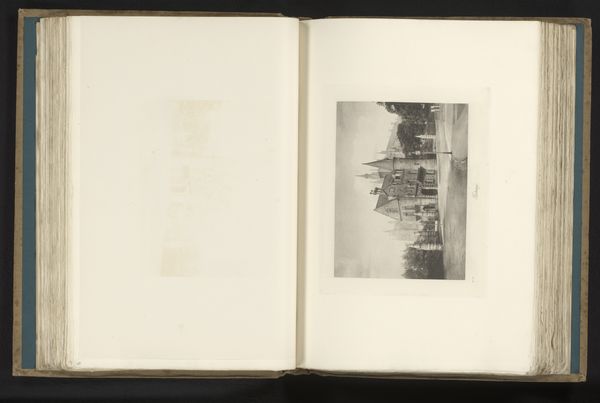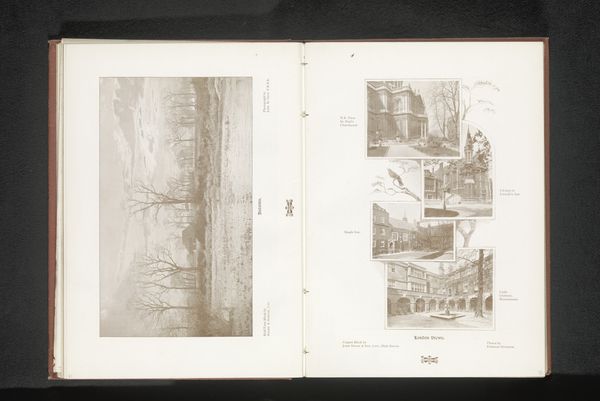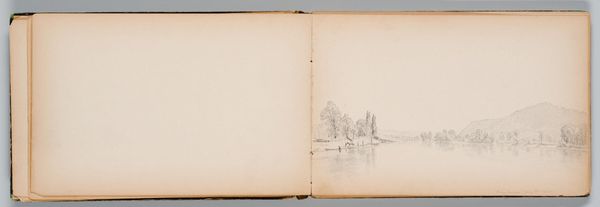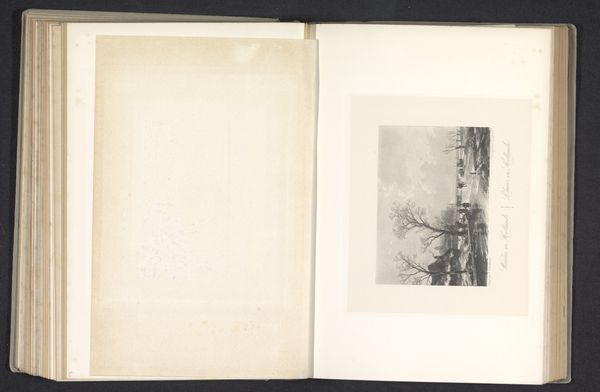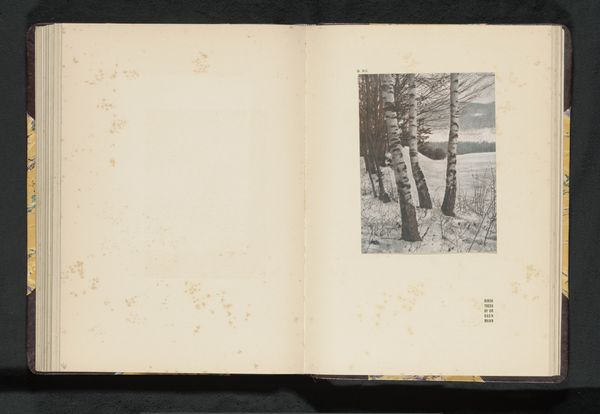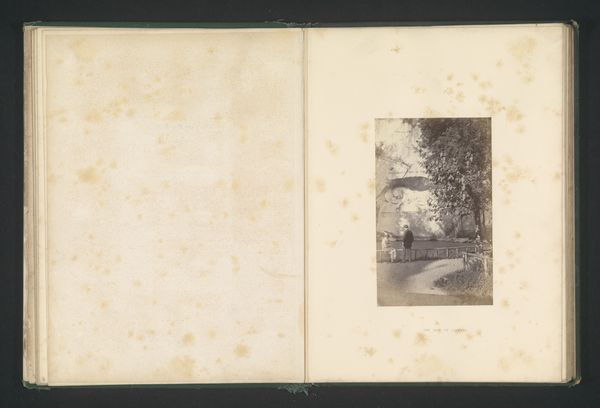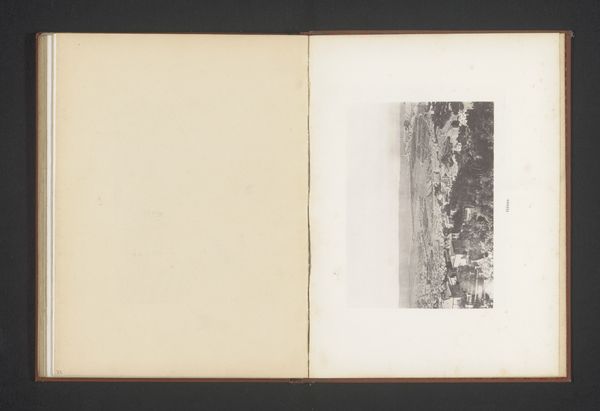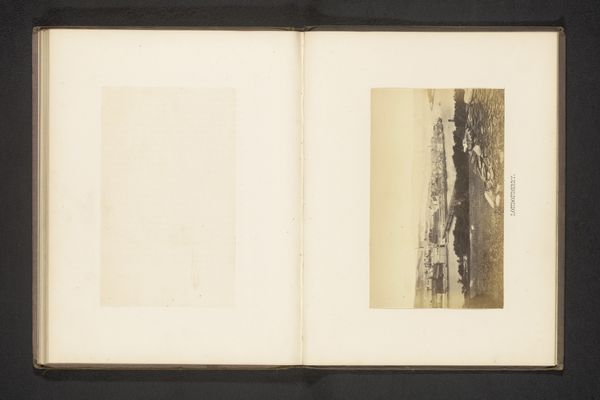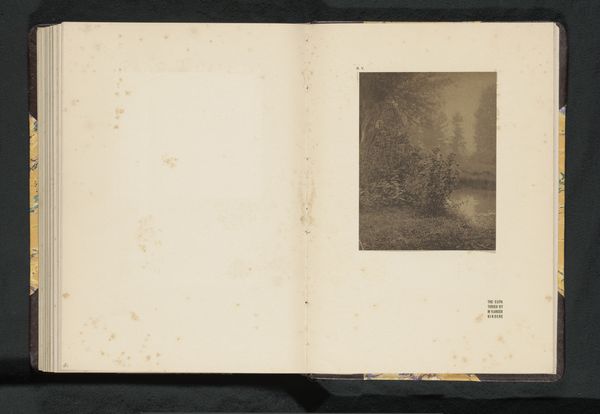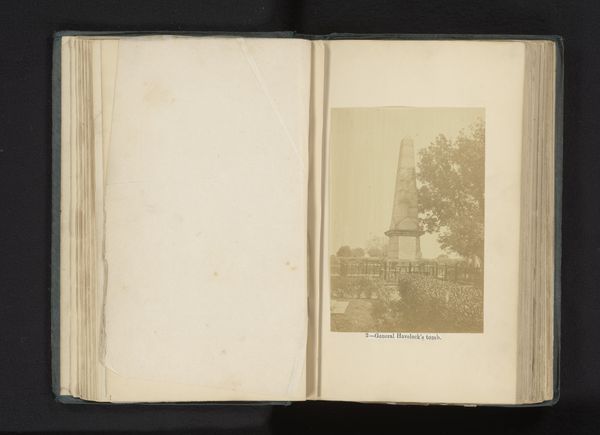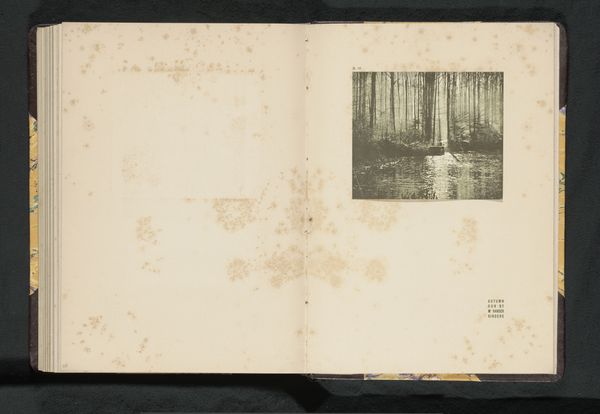
Dimensions: height 98 mm, width 131 mm
Copyright: Rijks Museum: Open Domain
Curator: This albumen print, taken before 1905, captures a stark "Winter Landscape in Flanders" by Edmond Sacré. What's your immediate reaction? Editor: Brrrr, chilly! It feels incredibly desolate. The monochrome palette emphasizes the bleakness of the winter landscape. I wonder what it was like to be there. Curator: Sacré really plays with the tonality, doesn't he? The albumen print process lends this wonderful depth. It captures the starkness, that winter light reflecting off the snow, almost like a memory fading at the edges. He clearly composed this *en plein air*, responding directly to what he saw. Editor: True. Considering that *en plein air* painting was still having its day, how would landscape photography relate to impressions of modernism that painters grappled with in portraying landscape? Curator: It's a fascinating question. Photographers like Sacré were attempting something similar to the Impressionists. Rather than striving for hyperrealism, there's a capture of atmosphere. He transforms the landscape into an emotional space through selective focus and composition. It brings to mind artistic license. Editor: The arrangement feels very constructed, despite its naturalism. The row of trees is almost like a proscenium arch framing the scene, the horizon receding into nothingness. Are we meant to feel separated from the landscape? Or invited to contemplate our relationship with the environment? Curator: Maybe it is a bit of both. I wonder what the everyday folk that actually walked that path might make of this perspective of theirs that renders so still a place always in transit. Editor: Right, it could be a commentary on the urbanization creeping into rural life. Think of how people navigated these routes then, what kinds of exchanges occurred in this liminal zone between the built and the "natural." Curator: Or it could be that he was attracted by what he sensed might disappear… the countryside as they once knew it? He preserves it as it wanes, giving new life as it passes into nostalgia. Editor: True. Its stillness encourages deeper thinking. Sacré gives weight to the idea of capturing what’s gone with a certain, sad, reverence. Curator: It leaves me reflecting on memory and loss, how we see the past shaped by our present concerns. Editor: For me, it's a reminder of the layered and evolving nature of any landscape, captured as still but always, always in transition.
Comments
No comments
Be the first to comment and join the conversation on the ultimate creative platform.

